Rheology
Type of resources
Topics
Keywords
Contact for the resource
Provided by
Years
Formats
Update frequencies
-
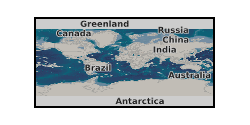
Rheometry data on ash from Mt Meager, British Columbia, Canada. All measurements that generated these data were performed using an Anton Paar MCR302 rotational rheometer with an Anton Paar powder flow cell attached. The rotating measuring geometry is 24.16 mm in diameter and contains 20 evenly spaced depressions of 1.75 mm that extend the entire length of the measuring cylinder. The profiled nature of this geometry prevents particle slip during rotation. Shear rate sweeps were performed to characterise the rheological behaviour of our pyroclast-gas mixtures. ~50 g of sample (ash from Mt Meager, British Columbia, Canada) was loaded into the powder flow cell with the measuring geometry inserted. Then for a constant gas flux applied to the base of the powder flow cell, the measuring geometry was rotated to apply a range of shear rates starting at 0.1 s-1 ramping up to 328 s-1 with approximately 20 data points generated per decade. These shear rate sweeps were performed for monodisperse grain sizes from 500 µm to 63 µm at a range of volumetric gas flow rates. Specifically for the 500 µm sample the rheology experiments were performed at 0, 15, 30, 45, 50, 55, 60, 65, and 70 L min-1. For the 250 µm sample the rheology experiments were performed at 0, 15, 20, 25, 30, 35, and 40 L min-1. For the 125 µm sample the rheology experiments were performed at 0, 1, 2, 3, 4, 5, 7, 8, 9, and 10 L min-1. For the 63 µm sample the rheology experiments were performed at 0, 0.25, 0.5, 1, 1.5, 2, 3, 4, and 5 L min-1.
-
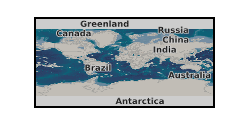
Synchrotron X-radiography (images) and diffraction data collected to measure rheology of Quartz coesite and stishovite.
-

Rheometric data for suspensions of bubbles and/or particles in a Newtonian suspending liquid. Experimental suspensions are intended as analogues for multiphase magma and lava (containing volatile bubbles and solid crystals). The dataset comprises data collected using a Anton Paar MCR702 rheometer. A Newtonian working fluid (sugar syrup) suspends variable fraction of gas bubbles and solid particles. Data relating to suspensions of bubbles only are found in the folder Bubble_Suspensions, and data relating to suspensions of bubbles and particles are found in the folder 3Phase_Suspensions. For all suspensions, rheometric data were collected in a wide-gap concentric cylinder geometry using both rotational rheometry (flow curves) and oscillatory rheometry (frequency sweeps). Bubble fraction and particle fraction are varied systematically. In each folder a matlab script is provided which facilitates extraction and analysis of the raw data, which are held in .csv files
-
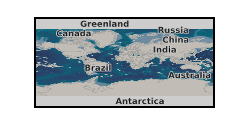
Synchrotron X-radiography (images) and diffraction data collected to measure rheology of olivine and ringwoodite structured Co2SiO4.
-
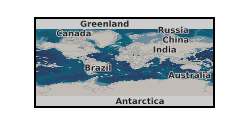
Experimental mechanical data for single crystal shear experiments. Grant abstract: In 2011, NERC began a scoping exercise to develop a research programme based around deep Earth controls on the habitable planet. The result of this exercise was for NERC to commit substantial funding to support a programme entitled "Volatiles, Geodynamics and Solid Earth Controls on the Habitable Planet". This proposal is a direct response to that call. It is widely and generally accepted that volatiles - in particular water - strongly affect the properties that control the flow of rocks and minerals (their rheological properties). Indeed, experiments on low-pressure minerals such as quartz and olivine show that even small amounts of water can weaken a mineral - allowing it to flow faster - by as much as several orders of magnitude. This effect is known as hydrolytic weakening, and has been used to explain a wide range of fundamental Earth questions - including the origin of plate tectonics and why Earth and Venus are different. The effect of water and volatiles on the properties of mantle rocks and minerals is a central component of this NERC research programme. Indeed it forms the basis for one of the three main questions posed by the UK academic community, and supported by a number of international experts during the scoping process. The question is "What are the feedbacks between volatile fluxes and mantle convection through time?" Intuitively, one expects feedbacks between volatiles and mantle convection. For instance, one might envisage a scenario whereby the more water is subducted into the lower mantle, the more the mantle should weaken, allowing faster convection, which in turn results in even more water passing into the lower mantle, and so on. Of course this is a simplification since faster convection cools the mantle, slowing convection, and also increases the amount of volatiles removed from the mantle at mid-ocean ridges. Nevertheless, one can imagine many important feedbacks, some of which have been examined via simple models. In particular these models indicate a feedback between volatiles and convection that controls the distribution of water between the oceans and the mantle, and the amount topography created by the vertical movement of the mantle (known as dynamic topography). The scientists involved in the scoping exercise recognized this as a major scientific question, and one having potentially far reaching consequences for the Earth's surface and habitability. However, as is discussed in detail in the proposal, our understanding of how mantle rocks deform as a function of water content is remarkably limited, and in fact the effect of water on the majority of mantle minerals has never been measured. The effect of water on the flow properties of most mantle minerals is simply inferred from experiments on low-pressure minerals (olivine, pyroxenes and quartz). As argued in the proposal, one cannot simply extrapolate between different minerals and rocks because different minerals may react quite differently to water. Moreover, current research is now calling into question even the experimental results on olivine, making the issue even more pressing. We propose, therefore, a comprehensive campaign to quantify the effect of water on the rheological properties of all the major mantle minerals and rocks using a combination of new experiments and multi-physics simulation. In conjunction with 3D mantle convection models, this information will allow us to understand how the feedback between volatiles and mantle convection impacts on problems of Earth habitability, such as how ocean volumes and large-scale dynamic topography vary over time. This research thus addresses the aims and ambitions of the research programme head on, and indeed, is required for the success of the entire programme.
-
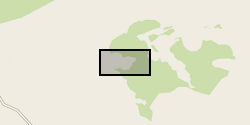
Scanned and annotated thin sections, in plane-polarised and cross-polarised light. Derivative statistical data for mineral grainsize and spatial distribution.
-
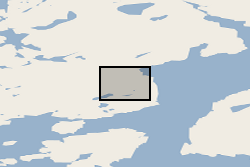
Scanned and annotated thin sections, in plane-polarised and cross-polarised light. Derivative statistical data for mineral grainsize and spatial distribution. Younger Giant Dyke, Tugtutoq, South Greenland.
-

This dataset contains high-speed video recordings and particle image velocimetry (PIV) analysis results from granular flow experiments performed on an inclined flume with a fixed rough substrate, at the University of Edinburgh. Included are the high-speed videos (.mp4), a Word document outlining the experimental details and analysis methods, and figures displaying key analytical results of vertical velocity and granular temperature profiles. The flows consist of sand particles with a volumetric mean diameter of 875 µm, propagating over a substrate of coarser sand with a mean diameter of 1063 µm. Experimental conditions include varying slope angles (34°–42°) to investigate the influence of inclination on flow dynamics. PIV was used to analyse the videos, generating vertical velocity profiles and granular temperature profiles. Lens distortion was corrected using MATLAB to ensure accurate measurements. This dataset is relevant to those interested in granular flow dynamics, natural hazard modelling (e.g., landslides, pyroclastic density currents), and granular flow industrial applications.
-

MFIX (Multiphase Flow with Interphase eXchanges) simulation input files and raw particle output files. The study was published in Breard, E. C., Fullard, L., & Dufek, J. (2024). Rheology of granular mixtures with varying size, density, particle friction, and flow geometry. Physical Review Fluids, 9(5), 054303. Description of files 1. Input particle input file (*.dat) 2. VELOCITY* and FORCES* files exported at 10 Hz The simulation are all done as pressure-controlled shear cells where the x and z axes are periodic boundaries, and the top and bottom boundaries are solid rough plates. The simulations are split in three types: MONODISPERSE, BIDISPERSE and TRIDISPERSE, where particle size (in mm), is indicated in the naming of the directory. The, in each set of simulation, the naming is with the following structure: 20N_0.0001ms, where the first number indicates the confining pressure (20 Newtons) and the second indicate the top plate moving velocity in the x-direction (0.0001 m/s). Note the simulations were run with MFIX-18. The MFIX code that is modified from the core code from the Department of Energy (DOE) is all present. The missing core code can be downloaded from the DOE department https://mfix.netl.doe.gov/.
-
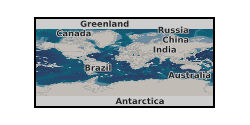
This data contains the results of numerical simulations described in the following two papers: Alisic L., Rhebergen S., Rudge J.F., Katz R.F., Wells G.N. Torsion of a cylinder of partially molten rock with a spherical inclusion: theory and simulation (2016) Geochem. Geophys. Geosyst.16 doi:10.1002/2015GC006061 Alisic L., Rudge J.F., Katz R.F., Wells G.N., Rhebergen S. Compaction around a rigid, circular inclusion in partially molten rock (2014) J. Geophys. Res. Solid Earth 119:5903-5920 doi:10.1002/2013JB010906
 NERC Data Catalogue Service
NERC Data Catalogue Service